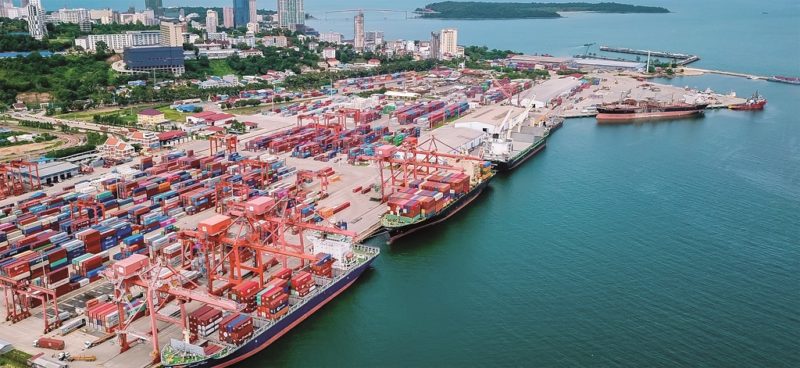
Many readers will be forgiven if they thought that Cambodia was a landlocked country in South East Asia, and originally part of the French Far East possession of Indo – China of Cambodia, Laos and Vietnam until 1955. The Kingdom of Cambodia has this reasonably sized coastal port in Si-Province at the tip of an elevated peninsula in the south west part of the country with access from the Gulf of Thailand. There is also a river port at the capital of Phnom Penh handling barges on the majestic Mekong river. Phnom Penh is the ancient and long serving capital of the country, and Sihanoukville is the second biggest city of around 90,000 people covering an area of 75.64 square miles.
Sihanoukville is named in honour of the former King of Cambodia, Norodom Sihanouk, who abdicated in 1960, having proclaimed Cambodia independent of the French in 1944 when the Japanese had occupied the country. The monarchy having survived for many centuries, much longer than the French occupation as a colony since 1863. The city was founded only relatively recently on 22nd November 1957, and is a very vital and only deep water port city for Cambodia on the busy trade route bringing supplies in from China, as well as exporting Cambodian goods. Cambodia was known as the Khmer Republic, with the Khmer Empire having flourished for six centuries from around 800 to 1450 AD, and with the Khmer capital of Angkor Wat in the north west of the country. In January 1976, the Khmer Republic became Democratic Cambodia, and the Khmer culture and language is still the principal culture and language in Cambodia today.
Sihanoukville is also the largest seaside resort in Cambodia with eight gorgeous beaches, as well as the nearby Asean Heritage Park, and the very beautiful Kirirom National Park, Preah Monivong National Park, Botum Sakor National Park, Phnom Kulen National Park, Ream National Pak, Kep National Park and Virachey National Park spread across the whole of Cambodia.
HISTORY OF SIHANOUKVILLE
The city and port have an alternative name of Kompong Som adopted from the local indigenous population. After the dissolution of French Indo-China, it became apparent that the increasingly tightening control of the Mekong Delta by Vietnam required a solution to gain unrestricted access to the sea. Plans were made to construct an entirely new deep water port at Kompong Som with a good depth of water and ease access from the sea. In August 1955, a French and Cambodian joint construction team began hacking their way through the forests from a small base camp towards the sea to reach the area around Sihanoukville. Funds for the construction of the port came from France, and the new road was financed by the United States of America. The port had been opened in June 1955 with a new jetty at right angles to the shore of two berths, with vessels berthing on both the interior and exterior of the jetty. The port was subsequently increased in 1966 to eight cargo berths with the construction of a new wharf, and the construction of a container terminal with modern cargo handling equipment and four gantry cranes that was completed in March 2007.
Strangely, the new port became a military facility for both sides of the twenty year Vietnam War. Vietnam guerrillas of the National Front for the Liberation of South Vietnam used it until 1970, and then it came under the Government of Lon Nol in the service of the United States of America. The port was the last place to be evacuated by the U. S. Army, only days before the Khmer Rouge guerrillas took control of the government in April 1975. The events surrounding the seizing of the American container ship Mayaguez and her crew on 12th May 1975 by the Khmer Rouge and the subsequent retaking of the vessel by U. S. Marines in the waters of Koh Tang off Sihanoukville have been largely forgotten. During two days of action, the U. S. A. began air strikes on the mainland of Sihanoukville including the port and Ream Naval Air Base, a railroad yard and the petroleum refinery, in addition to air strikes and naval gunfire on several Cambodian islands in the Gulf of Thailand.
After the fall of the Khmer Rouge regime in 1979 and the subsequent opening up of the economy of Cambodia, the port of Sihanoukville regained its importance in the development and recovery of the country, with the port then developed into a modern port with eight cargo berths and a container terminal, as well as two oil terminals located in the deeper water off Sihanoukville, the Sokimex Oil Terminal and Tela Oil Terminal.
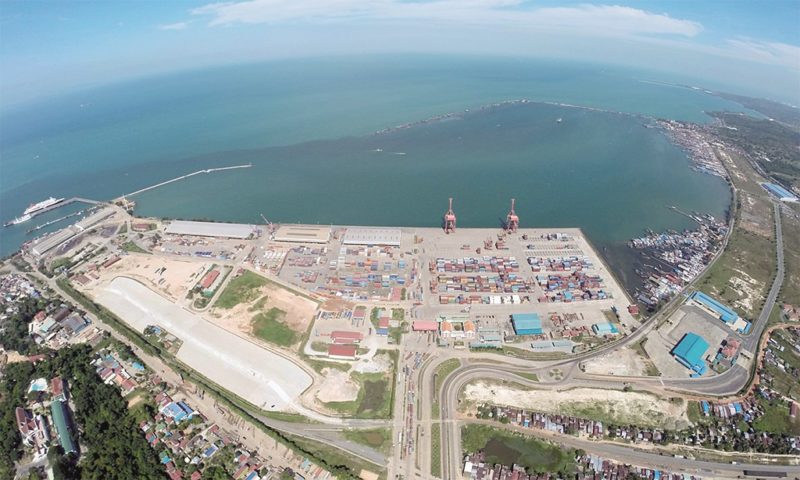
The deep water Port of Sihanoukville and the capital of Phnom Penh are today linked by a modern highway. Cambodia has an area of 181,300 square kilometres and is known as Kampuchea today, and its industries and GDP are provided by agricultural products, rice, rubber, maize, pepper, kapok, livestock, fishing, car assembly, cigarette manufacture, textiles, electronic components, timber, plywood, paper, tyres, cement, oil refining and other products. The port is located at position 10°39′ North, 103°30′ East and has a total land area of 125 hectares. The Bay of Kampong Som is protected by a string of beautiful islands against tidal waves and the full force of gales and typhoons, and is deep enough to not require permanent dredging of the navigational channels. Cargo traffic in 2021 amounted to 5.5 million tonnes of imports and exports plus 500,000 TEU of containers. This had increased from the 2015 figure of 3.8 million tonnes of imports and exports, and 391,000 TEU of containers. The deep water Port of Sihanoukville can accommodate ships of up to 20,000 dwt, with container ships of up to 1,500 TEU capacity. A breakwater has been constructed to protect the berths in both rainy monsoon and dry seasons.
The climate of the port area is Hot Monsoon Tropical with the average maximum temperature around 30 degrees Centigrade and the average minimum temperature around 24 degrees Centigrade. Higher temperatures are not uncommon just before the start of the rainy season to around 38 degrees Centigrade. The month of January sees the lowest night time temperatures of 20 degrees Centigrade. The month of May is the warmest month and heralds the beginning of the wet season, as the port is on the easternmost fringe of the South West Monsoon. Tropical cyclones only rarely cause damage at the port. The total annual rainfall is high at 86.6 inches per annum with the most rain falling in July, August and September. A very high humidity of 90% gives a ‘double whammy’ to tourists who are unable to cope with this and the high temperatures reaching one hundred degrees Fahrenheit.
PORT CARGO BERTHS AND EQUIPMENT
BERTH LENGTH(m) DEPTH(m)
COMMENTS
1 90.0 8.5 to 9.0 – Old Jetty Cargo Exterior berth
2 290.0 7.5 to 8.0 – Old Jetty Cargo Interior berth
3 200.0 8.5 to 9.0 – New Wharf General Cargo berth
4 200.0 8.5 to 13.0 – New Wharf General Cargo berth
5 160.0 8.5 to 13.0 – New Wharf General Cargo berth
6 330.0 8.5 to 13.0 – New Wharf General Cargo berth
7 200.0 8.5 to 10.5 – Container Terminal
8 200.0 8.5 to 10.5 – Container Terminal
The offshore Sokimex Oil Terminal is located at position 10°43′ North, 103°31′ East, and the Tela Oil Terminal is located at 10°42′ North, 103°32′ East. The port is well served by five tugs of a total power of 8,000 bhp, as well as a pilot boat, a mooring boat and a patrol boat. The port cranes consist of four container gantry cranes of 30.5 tonnes capacity, seven rubber tyred cranes of 35.5 tonnes capacity, eight super container stackers of 45.0 tonnes capacity, an empty container stacker of 7.5 tonnes capacity, two mobile cranes each of 60 tonnes capacity, seven quayside cranes of 10 to 50 tonnes capacity, and eight forklifts of 10.0 tonnes capacity. The port also owns 35 trailers of up to 40 feet in length, and twenty trucks.
The port uses a Container Terminal Management System (CTMS) for container lifting and storing, and yard and vessel planning. A general cargo storage yard is of 1.7 hectares, a container yard of 9.2 hectares that can hold 8,400 TEU of containers, with a further container yard for empty containers of 2.3 hectares for 3,000 TEU of containers. A large number of container reefer plugs are provided, as well as six large general cargo warehouses for a total capacity of 84,000 tonnes of cargo in 42,000m2 of covered warehousing, and an open yard for a further 90,000 tonnes of cargo on 45,000m2 of land. There is a Railway Container Yard, and the Port Administration Building is near one of the container storage yards.
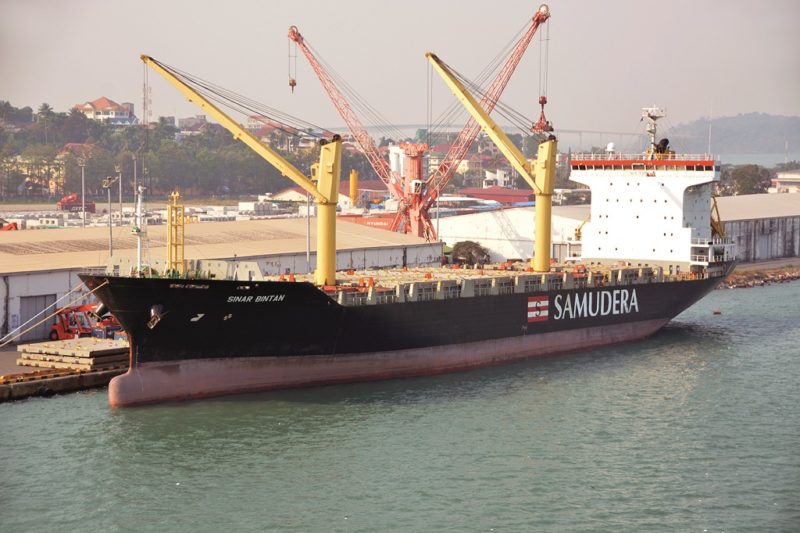
The port uses a Vessel Tracking System (VTS) with navigational buoys lit at night on the approach channel of three kilometres in length with a maintained depth of 12.0 metres. The deep water port requires little or no dredging, and the tidal range is only 1.2 metres. Care should be taken entering and leaving the port during the South West Monsoon season from June to October, and during the North East Monsoon season from November to February. There are three anchorages named the Northern, Southern and Tanker anchorages.
The growth of the port in the last twenty years has been impressive as shown in the following table:-
Year Gross Cont. TEUs Vessel Calls
Traffic Traffic
(Mtonnes)
2003 1.772 0.805 181,256 878
2004 1.503 0.934 213,916 730
2005 1.381 1.024 211,141 686
2006 1.587 1.123 231,036 912
2007 1.819 1.315 253,271 876
2008 2.058 1.315 258,775 954
2009 2.051 1.311 257,876 955
2010 2.218 1.345 223,928 932
2011 2.542 1.548 254,831 957
2012 2.832 1.642 270,645 971
2013 3.012 1.754 286,450 988
2014 3.424 1.975 333,904 1,103
2015 3.761 2.154 391,819 1,292
2016 4.040 2.442 400,187 1,322
2017 4.365 2.678 459,839 1,305
2018 5.329 2.968 541,228 1,451
2019 6.548 3.218 639,211 1,662
2020 6.602 3.345 641,842 1,582
SIHANOUKVILLE SPECIAL ECONOMIC ZONE (SSEZ)
The Sihanoukville Special Economic Zone (SSEZ) is an overseas economic trade co-operation zone of 68 hectares of land within the port and in operation since 2012. The zone was designed to promote favourable market conditions, including tax advantages, a safe political environment, lower labour costs, excellent services and a trading infrastructure. In addition to this zone around the port, a large Chinese business community has been developed over the last decade. As well as the port wharves and the two offshore oil terminals, the port has a modern cargo storage and logistics facility, which serves many shipping companies, freight forwarders, suppliers and maintenance contractors. The economy of the city of Sihanoukville is also based on fisheries and frozen shrimp processing, aqua-culture, food and clothing production, and a growing tourist trade. An important rail link from Trat on the Thai and Cambodia border brings in containers daily from Thailand for shipping through Sihanoukville. The main rail line of length 164 miles also brings in and takes out containers and freight to the Sihanoukville Port Special Economic Zone from the capital of Phnom Penh.
In summary, the SSEZ delivers the following special incentives and advantages to new shippers and manufacturing businesses:-
- Permission for a long term lease of a property for up to 50 years
- Exemption of import duty for construction and production materials and equipment
- Zero percentage VAT on all imports
- Tax exemption on profits for the first nine years
- Permanent visas issued for all foreign business people
- Located within the Port Zone with reductions in charges for imported and exported cargo
- Master Plan for the layout of new properties and factories
- Zero risk of natural typhoon or earth quake damage to property
- Administrative centre for banking, telecommunications, clinic and presentation and training facilities
- Most other indirect tax reductions and on charges not covered under the above headings
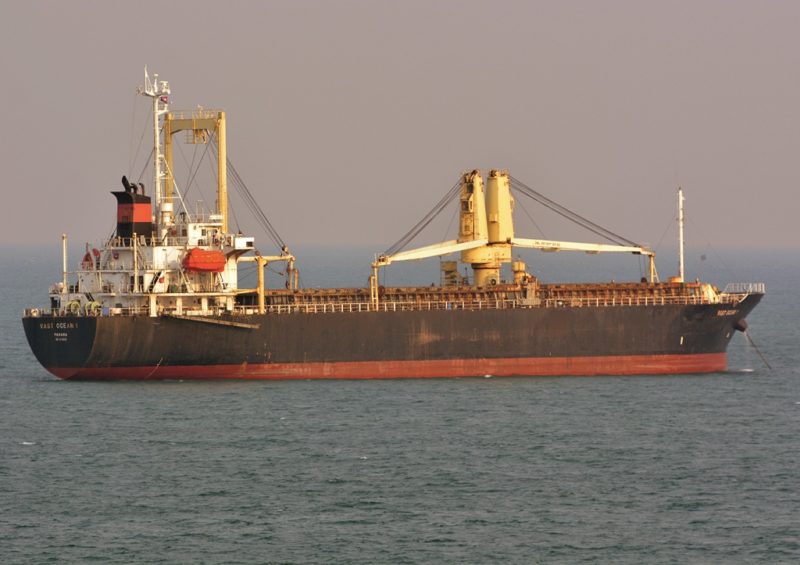
OFFSHORE ISLANDS AND NEARBY NATIONAL PARKS
The many beaches, offshore islands and national parks make Sihanoukville the premier seaside resort with steadily increasing numbers of Cambodian visitors as well as international tourists. However, Cambodian tourism remains insignificant when compared to the mass tourism of neighbour Thailand. The future of tourism in Sihanoukville will be determined by the ability of the authority of Si-Province to manage the wonderful natural resources, set against the need for urban and island growth, the port and industrial infrastructure, and expanding local population.
The very large influx of Chinese investment into the area is a recent feature, with modern casinos together with Chinese developers bringing in large numbers of Chinese workers for other projects. Mandarin Chinese signage is seen all over the city together with Khmer and English signage on roads and public buildings. There are around two hundred flights per week from Chinese cities arriving at Sihanoukville International Airport located eleven miles from the city at the former Ream Naval Air Base. The large numbers of casinos could see Sihanoukville become a gambling haven similar to that of the former Portuguese enclave of Macau of Southern China.
China has a policy of ‘One Belt One Road Initiative’ of spreading its sphere of influence far and wide globally. It has a Chinese Government economic and strategic agenda by which Eurasia together with Africa and Oceania are being more closely tied along two routes, one overland and the other maritime. The initiative permits new economic aid to be provided to needy economies, but it sets dangerous precedents for other global powers.
The deep water Port of Sihanoukville is located 2.5 miles north of the city of the same name, the city having developed hand in hand with the port over exactly the same time frame.
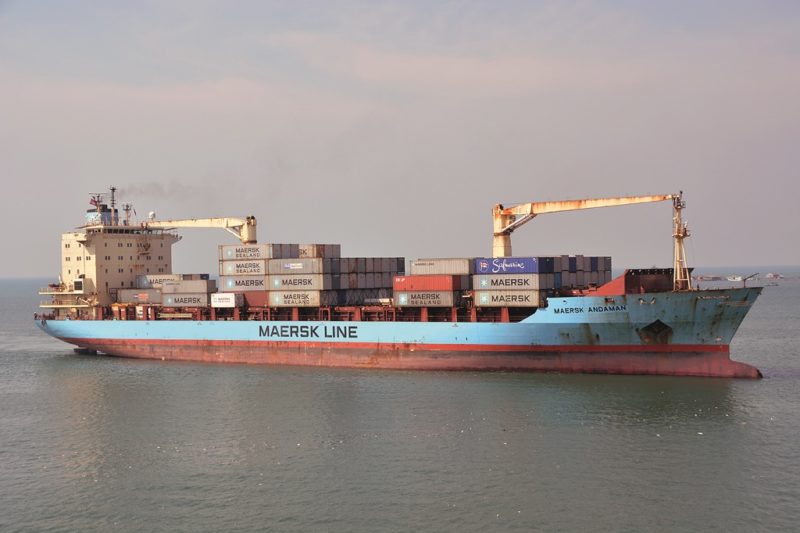
The city is divided into five districts called ‘Sangkats’ with Sangkat 1 being the Port Zone with a population of 37,450 people, Sangkat 2 being inland of Sangkat 3 with a combined population of 38,250 people, and Sangkat 4 lying to the south of the city centre with a population of 13,100 people.
There are eight islands lying offshore from Sihanoukville, with only the largest of Koh Rong with a population of just over one thousand people having a district name of Sangkat 5. These islands are important and are described as follows:-

Koh Rong lying 16 miles west of Sihanoukville as the biggest of the islands with an area of 30 square miles and a hilly terrain and a highest point of 1,040 feet in the north west of the island. The hills provide water for creeks, lagoons and estuaries. There are many guest resorts, hotels and pubs in and around Koh Tuich village, the island is virtually empty of tourists in winter, and the local population use a well-developed daily ferry network to arrive and depart from the island.
Koh Rong Sanloem with beautiful Saracen Bay and equally beautiful smaller beaches on the west and east coast of the island. It lies slightly closer to Sihanoukville than its bigger neighbour of Koh Rong island, but is covered in dense forest on lower hills with a smaller interior jungle. Marine life around Koh Rong Sanloem is very diverse and offers many diving areas. This water sports island has a well-developed daily ferry network from Sihanoukville.
‘Snake Island’ or Koh Puos lies very close inshore to Sihanoukville and is reached by a high, arched concrete road and pedestrian bridge. The beautiful Treasure Island Beach and Victory Beach of Sihanoukville are only 800 metres from Koh Puos, with the island developed by Russian investors and converted into a luxury holiday destination with a very high standard residential area.
Koh Kaong Kang or ‘Mangrove Island’ is a popular centre for water sports and snorkelers. The island is very flat, and hence drinking water is very scarce, and it thus does not have a permanent population.
Koh Koun or ‘Child Island’ lies between Koh Rong and Koh Rong Sanloem and is very small with no beach and is uninhabited.
Koh Tuich or ‘Small Island’ lies off the village of the same name on Koh Rong and is noted for its little pagoda in use during the last decade.
Koh Dek Koul is a small island lying four miles off Treasure Island Beach and only 300 or 400 metres off ‘Snake Island’.
Koh Bong Po-oun or ‘Lovers and Siblings Island’ has been renamed as Koh Song Saa and has two tiny islets off the north east coast of Koh Rong.
Sihanoukville lies at the tip of the rolling hills that end in an elevated peninsula at the Gulf of Thailand. The longest river in Sihanoukville is the mangrove lined Ou Trojak river running from Otres Pagoda to Otres Beach. In this tidal mangrove area, fish such as barramundi, mangrove jacks and barracuda are the prize targets for sports anglers, while the lower river has a marina.
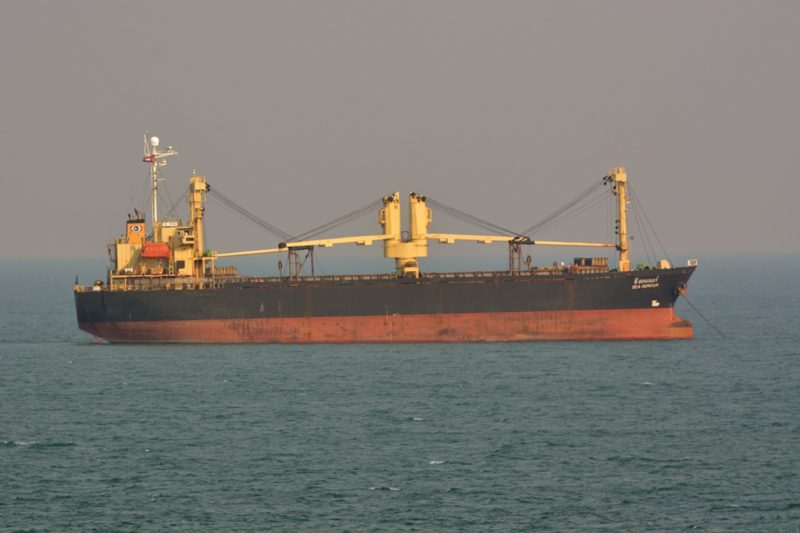
Local fishing boats supply very fresh fish to restaurants along the south bank of the river. The rivers, wildlife and forests and other attractions of the nearby Asean Heritage Park and the seven other beautiful National Parks, are a mecca for tourists wishing to experience
These seven National Parks are:-
Kirirom National Park was established in 1993 along with several other Cambodian national parks and covers an area of 350km2 around the Kirirom Mountain of 700 metres in height. It lies to the north of Sihanoukville and is well conserved with rare birds, abundant fresh air, waterfalls, tall pine trees, orchids and other exotic flowers, marine habitats, mangroves, sea grass beds, beaches, coral reefs, rivers and islands, and freshwater wetlands teaming with wildlife.
Preah Monivong National Park is located in Kampot Province in the south east section of the Caramom Mountains, and has abundant wildlife and a statue of Lok Yeay Mao, a mystic Cambodian heroine.
Botum Sakor National Park is the second largest National Park in Cambodia at 1,715km2 with organised safaris to see the wildlife in a unique biodiversity that includes five species of mammals in the Bengal Slow Loris, Indo-Chinese tigers, Pileated Gibbons, Sunda Pangolins, and Malaysian Tapirs, a relative of the South American Tapir, as well as a rich avian feast.
Phnom Kulen National Park is located in Siem Reap Province 50 kilometres north of Sihanoukville, in the Phnom Kulen mountain massifs. It was established in 1993 and is of 374km2 with much wildlife to see and relax by the rivers. There is also an eight metre high statue of the Buddha in the park.
Ream National Park is of 210km2 and can be visited on tours and safaris from Sihanoukville as it is located only 18 kilometres from the city. It was also established in 1993 when the Cambodian Government began to take action to protect these threatened nature resources.
Kep National Park is the smallest Cambodian National Park at only 50km2 and is located in the Kep region of the country with lots of wildlife, for example exotic birds, monkeys and other animals, and is also complete with two Buddhist ‘Wat’ temples.
Virachey National Park is of 3,300km2 in north east Cambodia and the largest National Park and one of only two Cambodian Asean Heritage Parks. The Park overlaps both the Ratanakiri and Stung Treng provinces, and while some of the park is threatened by illegal logging, the Cambodian Ministry of the Environment have taken measures to protect the park and its precious flora and fauna.
There are less than five hundred Cambodian elephants left in the wild in Mondulkir province, but as more roads are built, more logging and habitat destruction are endangering the future for the Cambodian elephant. The Asian elephant is smaller than the African elephant with much smaller ears, and is found throughout South East Asia from India in the west to Borneo in the east.
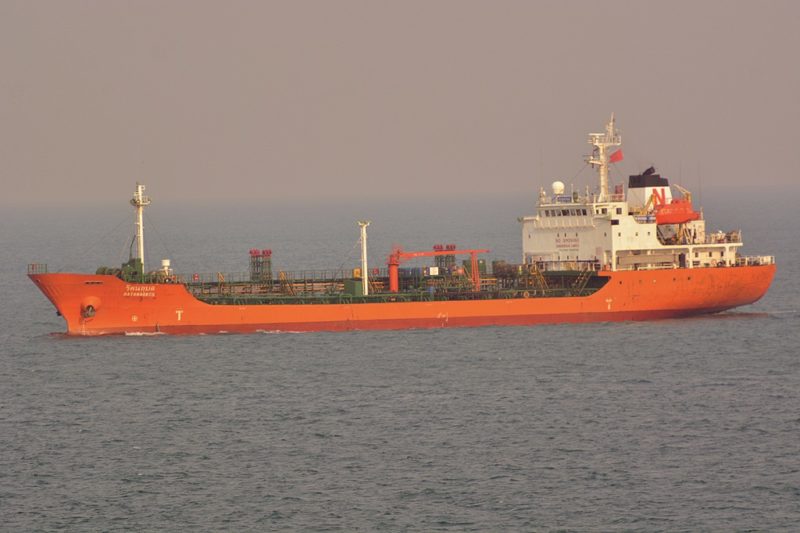
SHIPPING OF THE PORT OF SIHANOUKVILLE
GENERAL AND BULK CARGOES
In any one typical week, a dozen container ships arrive at the port to unload or pick up feeder containers, as well as at least three dry bulkers, vehicle carriers or general cargo ships. In one week in December 2021, Astral Ace, a typical car carrier owned by Mitsui of Japan and of 36,615 dwt, arrived with several decks for carrying up to 4,000 cars. She has dimensions of overall length of 175.0 metres and a moulded beam of 29.0 metres, and trades regularly between Japan and Laem Chabang in Thailand and Sihanoukville.
The five hold bulker Universe Wealthy of 28,288 dwt was built in 2001 with dimensions of overall length 172.0 metres, moulded beam of 27.0 metres, and a loaded draft of 5.6 metres and arrived with a bulk cargo.
The Chinese general cargo ship Tai Hang Shan of 12,025 dwt trades between Shanghai and Bangkok and Sihanoukville, using two large deck cranes mounted on pedestals in the centre of her deck of overall length of 120.0 metres.
FEEDER CONTAINER SERVICES
The Port of Sihanoukville container services are operated by a dozen shipping companies with medium and small feeder container ships of between 1,000 TEU and 2,500 TEU capacity sailing on many routes around South East Asia. These shipping companies are:-
Maersk Line of Denmark with Maersk Aberdeen of 14,063 grt and completed in June 1999 of 1,098 TEU capacity serving Sihanoukville. She sails regularly from Qingdao and Xiamen in China and calls at Singapore at the giant Tanjung Pelepas container terminal, and at Panjang on the south east coast of Sumatera Island in Indonesia along the north coast of Lampung Bay, and also at Manila before arriving in Sihanoukville. Maersk Line feeder ships make two loop calls at Sihanoukville, the other is to Hong Kong and Shanghai from Songkhla in Thailand and Sihanoukville.
Hyundai Merchant Marine (HMM) ordered ten large container ships in 2016 to maintain its 2.2% share of the global container business, and at the end of 2017 also joined a co-operation body called the Korean Shipping Partnership (KSP) of fourteen Korean shipping lines to bolster South Korean shipping after the bankruptcy of Hanjin. HMM had twelve new container ships of either 23,964 TEU from the Daewoo yard or 23,820 TEU from the Samsung yard delivered during 2020. Three more giants were on order from the Daewoo and Samsung Heavy Industries yards. This is the reason why the line has moved up one place from 9th position to 8th position in 2020 from 2018 in world ranking. The cargo carrying capacity of 602,000 TEU of HMM ensures that the carrier will move the largest portion of the exports of South Korea, and thus as a top integrated logistics company it will play a big part in the future economic prosperity of South Korea after receiving funds of £600 million in convertible bonds from the South Korean Government. Smaller HMM feeder vessels call at Sihanoukville from Laem Chabang and Kantang in Thailand and continue on to Manila, Inchon, Busan, Shanghai before returning to Thailand and Cambodia.
Columbia Shipmanagement Gmbh (DSM) of Hamburg have their subsidiary Columbia Shipmanagement (Singapore) Pte Ltd. of Suntec Tower in Temasek Boulevard. The company have had 40 years of ship management, crewing agency and crew training experience in 25 offices worldwide and with 15,000 employees on land and sea. Their container ship Cape Nabil of 18,257 grt was built in 2010 and is in service round the ports of South East Asia. She calls at Kobe, Tokyo, Shanghai, Shenzen, Kwangyang, Kaohsiung, Keelung, Ho Chi Minh City, Jakarta, Sihanoukville and Laem Chabang on her regular voyages.
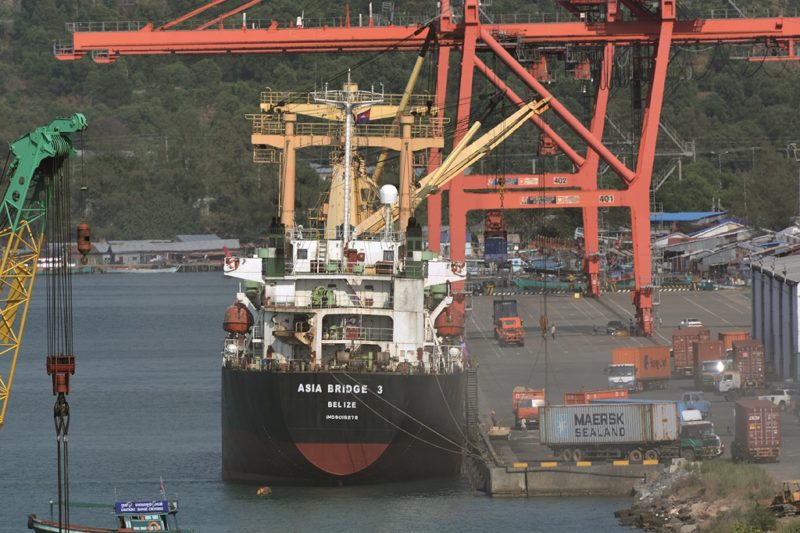
Samudera Shipping Line was founded in Singapore on 22nd December 1993 for shipping services that connect trade routes and ports in South East Asia, India, Pakistan, Bangladesh and the Far East and Middle East. The fleet consists of general cargo ships, container ships, and oil, chemical and gas tankers. Funnel colours are yellow with thin central red and white bands superimposed by a black ‘S’. The container ships Sinar Bima of 1,118 TEU capacity and built in 2018, and the sister container ships Sinar Sabang and Sinar Sumba of 18,321 grt and 23,350 dwt and built in 2008 were seen wearing these bright funnel colours in Sihanoukville in 2021 on their service from Singapore.
Evergreen Line of Taiwan have a very large fleet of giant container ships operating on worldwide routes, and chartered eleven giant container ships of 18,000 TEU from Shoei Kaisan Kaisha of Japan that entered service on the Far East to Europe service during 2018/19. Smaller Evergreen container ships operate on the Far East Africa Express (FAX) service, and on Intra South East Asia routes. Evergreen Line makes one feeder call per week to Sihanoukville from Shekou in China and Hong Kong via Ho Chi Minh City to unload and load 300 TEU of containers.
Pacific International Lines (PIL) had a large fleet of 112 container ships of 0.35 million TEU capacity in 2018, and 130 container ships of 0.411 million TEU capacity in 2020, a rapid advance from being incorporated in Singapore in 1967. PIL has developed from a coastal South East Asia operator into the largest shipowner serving this region, and also serves the Asia to Europe route, Middle East, Oceania and Latin America and serves over 500 ports worldwide. A twice weekly services operates to and from the Port of Sihanoukville around the region and to Singapore with the feeder container ships Kota Tampan and Kota Tenaga of 756 TEU capacity and 10,600 dwt, and the slightly larger Kota Rancak of 945 TEU capacity and 13,260 dwt, and Kota Rakyat of 13,001 grt and built in 2006. This quartet all have service speeds of 14.5 knots and operate between Qinzhou in China and Tanjung Pelepas in Singapore, Sihanoukville, and Laem Chabang in Thailand.
Mariana Express Lines Ltd. (MELL) was established in 1997 with regular sailings in the Asia Pacific region and currently has an extensive feeder container network in China, South East Asia, Japan, Australia and the Pacific islands, with Hong Kong and Kaohsiung as hubs. The fleet includes the feeder container ship MELL Sudong of 16,838 dwt and employed on the Australian and South Pacific islands strings.
Advance Container Lines (ACL) was established in 1995 to provide a dedicated network of feeder container services in the South East Asian ports of Malaysia, Indonesia, Thailand, Cambodia, Myanmar, Vietnam, Philippines and also to India and Bangladesh. ACL operates a fleet of feeder container ships in the range from 200 TEU to 1,200 TEU capacity and serving thirty ports. ACL have a service from Shanghai and Singapore to Sihanoukville.
SITC Line was set up in 2001 and is based in Hong Kong as SITC International Holdings Co. Ltd., and now operates a large fleet of small feeder container ships on routes between China, Malaysia, Japan, Korea, Taiwan, Hong Kong, Vietnam, Thailand, Cambodia, Philippines, Indonesia, Singapore and Brunei. SITC Inchon is one of these vessels in the range from 847 to 1,265 TEU capacity with an average age of 7.5 years, all of the fleet having blue hulls and blue funnels with a central white band.
The fleet carried 2.483 million TEU in 2018, with container depots owned in Qingdao, Shanghai, Ningbo, Tianjin, Dalian, Haiphong and Ho Chi Minh City for clients such as Tsingtao Beer, Damco Logistics, Singamas and Hisense. SITC ships make three calls per week.
Malaysia Trade and Transport (MTT) uses a number of feeder container ships e.g. MTT Saisunee of 1,200 TEU capacity and 160 feet overall length with a green hull on a regular service from the Chaophraya river in Thailand to the Port of Sihanoukville.
Regional Container Line (RCL) is based in Thailand and has forty years of shipping experience since formation in 1979 for a service from Bangkok to Singapore. A large fleet of 52 feeder and deep sea container ships in the range from 300 TEU up to 7,000 TEU capacity operates on routes that include Sihanoukville to the Middle East and to Indonesia.
Lila Bhum of 8,443 grt and 865 TEU capacity, Nawata Bhum of 9917 grt and 1,108 TEU capacity, and Ora Bhum of 8,006 dwt built in 1997 are among RCL vessels that make two calls per week at the Port of Sihanoukville from Hong Kong and Singapore. Forty out of the 52 ship fleet of RCL have ‘Bhum’ suffixes to their names. A third call per week at Sihanoukville is a joint service with COSCO from Ningbo and Shanghai.
X-Press Feeders was formed in 1972 and is one of the largest independent common feeder carrier container lines in the world. A fleet of 110 owned and chartered container ships, with 43 owned and 67 chartered in, cover all of the major global container transhipment hubs throughout South East Asia, Africa, Caribbean, Latin America, Europe, Mediterranean and Middle East ports. The annual container throughput in 2019 was 5.6 million TEU carried on ninety worldwide services.
Bengal Tiger Line was formed in 1986 in India and moved to Singapore at the start of 2009 when it was acquired by a Singapore investment company. It has operated as a common feeder container carrier from its roots in the Bay of Bengal, but now carries cargoes in a wider area from the Far East to the Persian Gulf. The fleet are in the range from 1,000 to 5,680 TEU capacity and carried almost one million TEU during 2020.
Q-Express Line (QEL) carries containers and breakbulk cargo in South East Asia including the Port of Sihanoukville, and also has freight forwarding, ship agency, port services, and heavy and project cargo in its portfolio.
Namyuen Yong Shipping Line of Bangkok make three calls per month at Sihanoukville on the route between Bangkok in Thailand and Sihanoukville in Cambodia. It was established in 1983 by businessman Sumit Leungsuwan, who has developed the company over thirty years into an expanding logistics provider as part of the Nam Yong Group of Bangkok.
Cam Freight Services Co. Ltd. (CFS) of Cambodia is the most important freight forwarder in the port, and has played an important part and leading role in the development of the international business of the port. The company provides sea, land and air freight shipping, project handling, and custom brokerage services. The company has a very large customer base that has contributed much to the success of the port.
CRUISE SHIPS
After a prolonged two year hiatus due to the Covid pandemic, international cruise ships are set to return to Sihanoukville during the late 2022 to summer and autumn 2023 season. At least twenty one calls are planned to arrive by Viking Cruises, Oceania Cruises, Aida Cruises, Princess Cruises, Holland America Line, Seabourn Cruises, Phoenix Seereisen, Hapag Lloyd Cruises and several other cruise lines. The cruise ships usually berth on the outer exterior berth of the Old Jetty opened in 1955, and if two cruise ships are in port on the same day, the longer cruise ship berths at one of the cargo berths. The port cruise trade has developed over the last ten years, with 21 cruise ships calling in 2013 with 12,550 passengers, 25 cruise ships in 2014 with 15,295 passengers, 36 cruise ships in 2015 with 31,100 passengers, 35 cruise ships in 2016 with 50,314 passengers, 30 cruise ships in 2017 with 25,539 passengers, 37 cruise ships with 40,598 passengers in 2018, and 40 cruise ships called in 2019 with 42,171 passengers.
The worldwide pandemic saw cruise ship calls and passengers plummet in 2020 to a very low level.
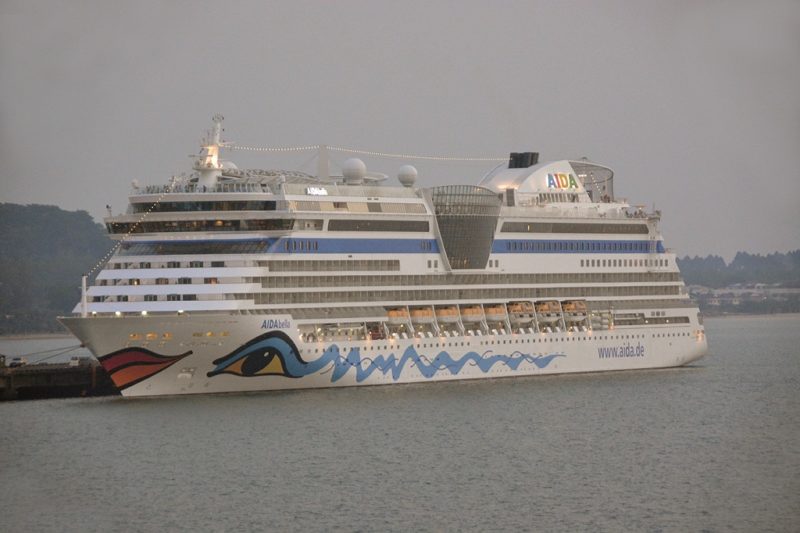
THE PORT OF SIHANOUKVILLE ANNUAL REPORT OF 2020
Cargo traffic throughput had dramatically increased by 10% to 15% during the last five years from 2015 to 2020. This has led to much increased revenue that will be ploughed back into new facilities and investments. Future expansion will include a Multi-Purpose Container Terminal of 350.0 metres in length with an apron width of 500.0 metres and alongside depths of 14.5 metres, for completion in 2024. Panamax size container ships will then be able to use the port, with the project financed by a loan from the Japanese Government of US$203 million. A Logistics Base of 200.0 metres in length for the export of acacia timber, wood chips, tapioca and milled rice, as well as acting as a base for offshore oil exploration in Cambodian territorial waters, will also be built. Five Japanese port construction experts have been resident in the port since 2005, as the majority of port expansion since that date has been assisted by loans from the Government of Japan.
The revenue of the port in 2020 came from Stevedoring Charges (46.45%), Lift On-Lift Off (LOLO) charges (26.88%), Vessel Entry Charges (21.67%), Sihanoukville Special Economic Zone Charges (0.77%) and Storage and Demurrage Charges of 4.23%. A delegation from the Cambodian Government Ministry of the Environment visited the port on 30th November 2021, along with 26 shipping journalists from fourteen news agencies to view the achievements, expansion and progress of the port for the conference of the ‘Seas of South East Asia’ at the end of 2021.
POSTSCRIPT
The Port of Sihanoukville or the Port of Kompong Som is very ambitious with plans to extend out into the Bay of Kompong Som in two further stages of expansion when the present expansion to handle Panamax size container ships is completed in 2024. A new turning circle would be used by bigger ships when port traffic throughput would be doubled to 10 million tonnes. The shape of the port would also change from that of today. Thus, in seventy years from a single jetty in 1955 with no accommodation for its first workers, other than shanty huts, and with the first road connection being hacked out of the forest by machete and heavy machinery, the port has plans to turn itself into a medium sized port as well as being the only port of Cambodia with access to the sea.
The existing port management structure is ideal for this expansion, with the Board of Directors consisting of a Chairman and six directors, some of whom are appointed by the Government of Cambodia.
The natural advantages of the port include deep water inshore and a degree of natural protection from storms provided by a string of islands across the mouth of the Bay of Kompong Som.






Comments
Sorry, comments are closed for this item